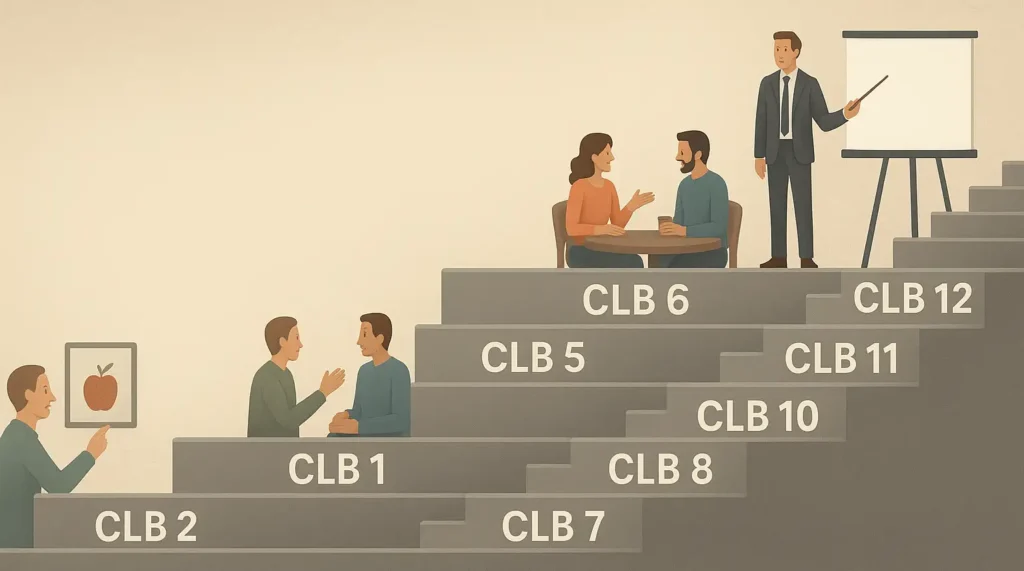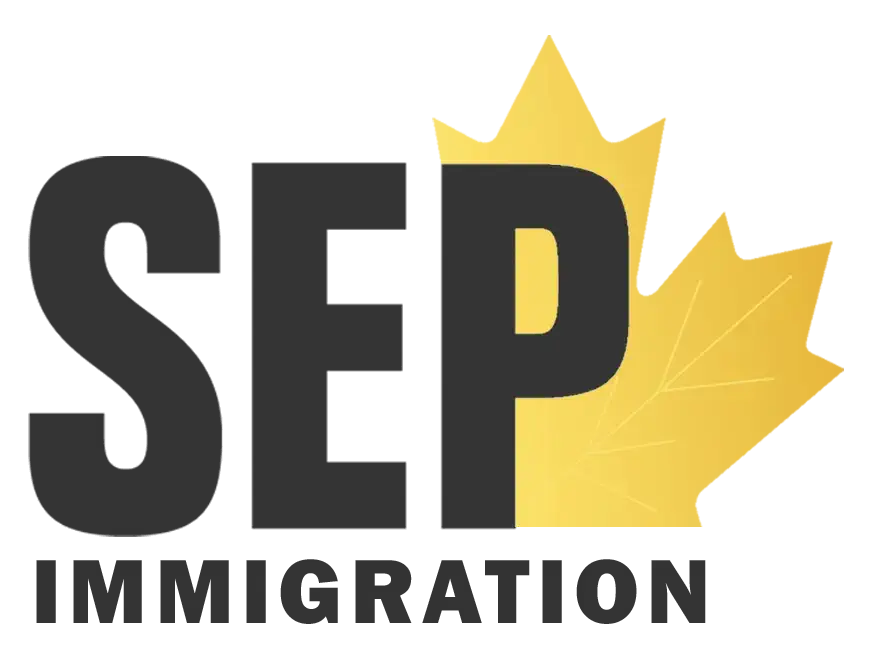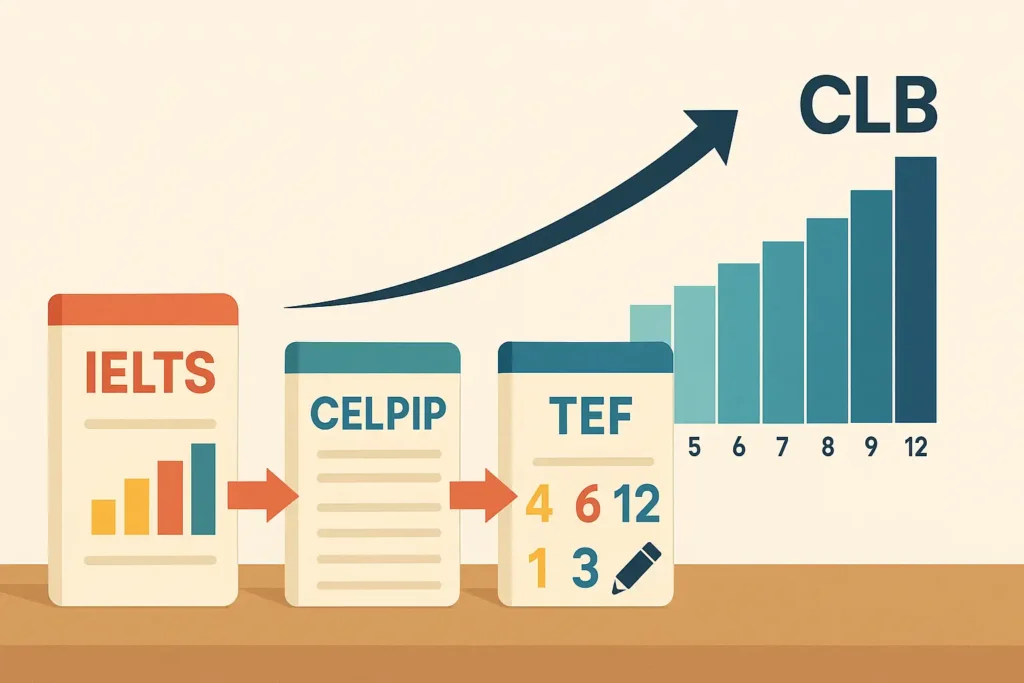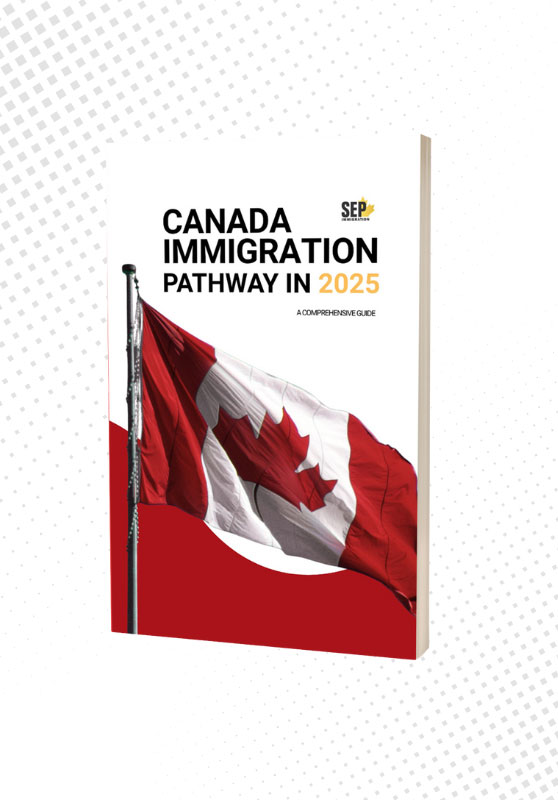Moving to Canada often requires proof of language skills, and that’s where the Canadian Language Benchmarks (CLB) come in. CLB is the national standard that measures how well adults can use English in real-life situations. Understanding your CLB level — and how it connects with tests like IELTS, CELPIP, or TEF — helps you set realistic goals.
This guide explains CLB levels, assessments, test comparisons, and practical ways to improve your score.

Table of Contents
ToggleIntroduction to Canadian Language Benchmark (CLB)
The Canadian Language Benchmarks, usually shortened to CLB, are Canada’s national standard for describing English skills in adults who are not native speakers. The framework measures listening, speaking, reading, and writing abilities across twelve levels.
These levels are grouped into three broad stages. CLB 1 to 4 fall under the basic category, CLB 5 to 8 are considered intermediate, and CLB 9 to 12 are advanced. Each step up reflects stronger communication skills and greater independence in daily life or work.
Applicants for immigration programs, including Express Entry and several Provincial Nominee Programs, often need to meet a minimum CLB level to qualify.
CLB Levels Explained
CLB levels describe what someone can realistically do with English in different situations:
- CLB 1–4 (Basic): At this stage, communication is very limited. Simple phrases and everyday expressions are understood, but conversations usually need repetition or gestures.
- CLB 5–8 (Intermediate): These levels open the door to smoother conversations in work and social settings. Reading longer texts becomes possible, and writing is clearer, though not free of mistakes.
- CLB 9–12 (Advanced): People at this level can comfortably use English in complex or professional situations. They can discuss unfamiliar topics, read detailed reports, and write with precision.

CLB vs. Language Tests (IELTS, CELPIP, TEF)
Canada does not give a test called “CLB.” Instead, applicants take an approved language test and then match the scores to CLB levels.
The most common English tests are IELTS General Training and CELPIP General. For French, candidates take TEF Canada or TCF Canada. The chart below shows how scores convert.
| CLB Level | IELTS General Training (R/W/L/S) | CELPIP General (per skill) | TEF Canada (approximate NCLC equivalency) |
| 10 | 8.0 / 7.5 / 8.5 / 7.5 | 10 | 263–277 / 393–415 / 316–333 / 393–415 |
| 9 | 7.0 / 7.0 / 8.0 / 7.0 | 9 | 248–262 / 371–392 / 298–315 / 371–392 |
| 8 | 6.5 / 6.5 / 7.5 / 6.5 | 8 | 233–247 / 349–370 / 280–297 / 349–370 |
| 7 | 6.0 / 6.0 / 6.0 / 6.0 | 7 | 207–232 / 310–348 / 249–279 / 310–348 |
| 6 | 5.0 / 5.5 / 5.5 / 5.5 | 6 | 181–206 / 271–309 / 217–248 / 271–309 |
| 5 | 4.0 / 5.0 / 5.0 / 5.0 | 5 | 151–180 / 226–270 / 181–216 / 226–270 |
| 4 | 3.5 / 4.0 / 4.5 / 4.0 | 4 | 121–150 / 181–225 / 145–180 / 181–225 |
This equivalency chart helps applicants see exactly what scores they need in each test section to reach a particular CLB level.
How to Get Assessed
The process is straightforward, though it requires some planning:
- Select an approved test. For English, IELTS General Training, CELPIP General, or PTE Core are accepted. For French, TEF Canada or TCF Canada.
- Register at an official testing centre. Seats can fill quickly, so booking in advance helps.
- On test day, complete all four skill areas. Your results will show a band score (IELTS), level (CELPIP), or numeric score (TEF/TCF).
- Convert each result into CLB using the government’s equivalency chart. The level may differ across skills; for example, CLB 7 in listening but CLB 6 in writing.
Test results are valid for two years. They must still be valid on the date your permanent residence application is submitted.
Improving Your CLB Score
Improving your CLB level isn’t about quick tricks — it’s about steady, practical steps. Here’s how you can work on each area:
- Listen actively. Don’t just play English audio in the background. Pause and repeat sections, write down new words, and check their meaning. Watching Canadian news broadcasts or YouTube channels can also help you get used to accents commonly heard in Canada.
- Read widely. Choose texts just above your current level. If a newspaper article feels too difficult, start with children’s books or simplified readers, then move up gradually. Highlight new vocabulary and try to use those words in writing or speech on the same day.
- Speak often. Practice doesn’t need a classroom. You can join conversation circles (many libraries and settlement agencies offer free ones), use apps that connect you with native speakers, or even talk to yourself by describing daily activities aloud. Recording your voice and listening back helps you notice grammar or pronunciation mistakes.
- Write daily. Start with short, simple sentences in a journal, then expand into longer paragraphs. A good exercise is to summarize news articles in your own words. Compare your writing to the original article and see what structures you can borrow. If possible, ask a fluent speaker or teacher to review your work.
- Use sample tests. Practice under timed conditions to mimic the real test. For IELTS, use past practice exams available online or in study books. For CELPIP, try their official online practice platform. Doing full sections back-to-back trains your stamina, which is important on test day.
- Seek feedback. Self-study can only go so far. A teacher, tutor, or even a peer can point out issues like sentence structure or weak pronunciation patterns. Many settlement agencies in Canada offer free or low-cost language classes linked to the CLB framework, and teachers there can give targeted feedback.
Progress may take weeks or months, but every small step builds toward a higher CLB. The key is consistency — even 30 minutes daily is more effective than long sessions once a week.
FAQ
How long are CLB scores valid?
Language test results are valid for two years and must be valid when you submit your application.
What is the Canadian Language Benchmarks scale?
It’s a twelve-level system that measures listening, speaking, reading, and writing in English for adults.
How do I find my CLB level?
Check your test report and compare each skill result with the official CLB equivalency chart.
What is the level 7 Canadian Language Benchmark?
CLB 7 represents strong intermediate ability. On IELTS, this means band 6 across all four skills.
What is the level 4 Canadian Language Benchmark?
CLB 4 is still basic. At this level, you can handle simple messages but struggle with complex situations.
Is CLB 7 hard to get?
It requires solid preparation, but many test-takers reach it after focused practice in all four skills.
What is so special about the CLB 6?
CLB 6 often marks a cut-off in immigration programs, making it a key stepping stone toward eligibility.
Can I take a CLB test online?
There is no direct “CLB test.” You must take IELTS, CELPIP, or another approved exam.
What jobs can I get with CLB 5?
CLB 5 allows basic workplace communication, suitable for roles where advanced technical or professional language isn’t required.
How much CLB is required for a Canadian work permit?
It depends on the permit type. Some require CLB 4, while others expect CLB 5 or higher.






